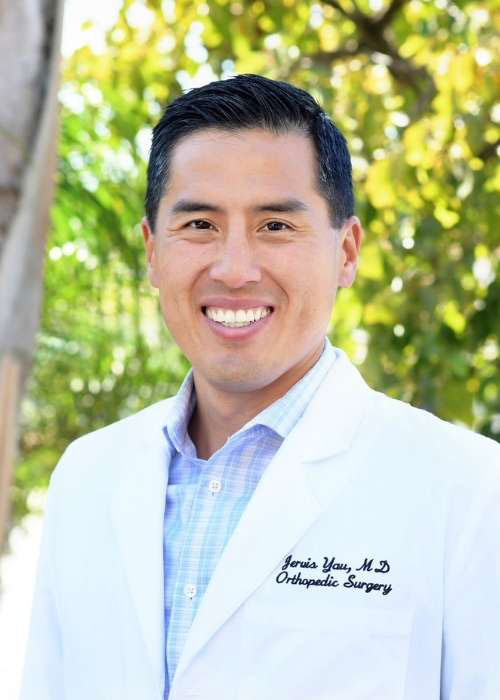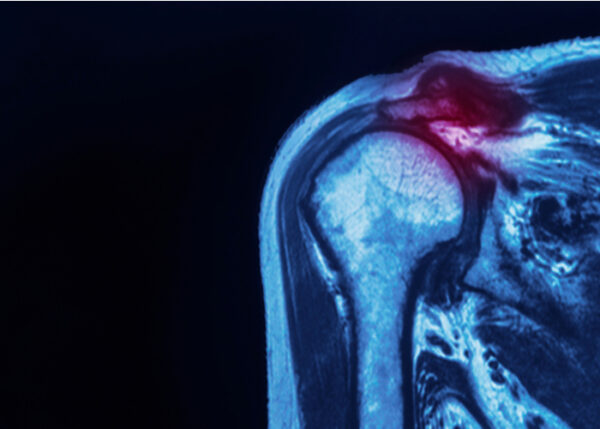Labral Tear & SLAP Repair Surgeon

Are you an athlete who participates in sports that involve throwing overhead? If so, you may be at risk of developing a shoulder labral tear or a SLAP tear. Shoulder labral tears and SLAP tears are common injuries sustained after a fall on an outstretched hand, from a sports injury or from natural degeneration of the labrum. Shoulder labral specialist, Dr. Jervis Yau provides diagnosis and both surgical and nonsurgical treatment options for patients in Santa Barbara who have labral or SLAP tears in the shoulder. Contact Dr. Yau’s team today!
Labral Tear Surgery and SLAP Repair Overview
The labrum is a “c” shaped rim of cartilage that lines and reinforces the shoulder’s ball and socket joint and serves as the attachment site for numerous ligaments, tendons and muscles. When a tear to the labrum occurs, such as a SLAP (Superior Labrum from Anterior to Posterior) tear, patients will experience aching pain and difficulty performing normal shoulder functions. Dr. Jervis Yau, orthopedic shoulder surgeon, offers arthroscopic labral tear surgery, including surgical SLAP repair, to patients living in the Santa Barbara, Goleta, Santa Maria and Ventura, California area who have experienced a torn labrum.
What is a SLAP Tear?
A SLAP tear refers to a specific type of labral tear in the shoulder joint that is located at the top of the glenoid (shoulder socket) and involves the attachment site of the biceps tendon. This labral injury can occur as a result of trauma, dislocation, repetitive overhead use and normal wear associated with aging.
What is a Labral Tear?
A labral tear is common in the active population. Injuries to the tissue rim surrounding the shoulder socket typically occurs during a fall onto an outstretched arm, direct impact to the joint, a sudden pull or a violent overhead reach. Many weight lifters and throwing athletes experience a torn labrum as a result of repetitive shoulder motions.
How are SLAP and Labral Tears Treated?
Following an acute labral or SLAP tear, most patients are treated without surgery through rest, ice, anti-inflammatory medications and physical therapy to facilitate healthy healing of the damaged tissue.
Shoulder arthroscopy labral tear repair is reserved for patients who fail conservative treatment or the tear is too severe that it leads to instability. The three common surgical options are:
- Debridement: removal of loose fragments of torn labrum using an arthroscopic approach. This option is only suitable for stable SLAP lesions that do not involve the biceps tendon.
- SLAP Repair: A SLAP repair uses anchors with attached sutures to secure the torn labrum to the glenoid. A SLAP repair is the most common procedure performed for symptomatic SLAP lesions and is typically reserved for young patients with an otherwise healthy shoulder.
- Biceps tenodesis: The biceps tendon is surgically transferred from where it attaches at the superior labrum to the proximal humerus in order to decrease strain on the superior labrum.

Recovery and Rehabilitation Following Arthroscopic Labral Tear Surgery
Dr. Yau will prescribe a detailed rehabilitation program to all patients at the first post-operative consultation. A sling is typically required for 2-4 weeks after surgery to keep the affected arm from moving. When post-surgery pain and swelling decreases, Dr. Yau will prescribe a physical therapy program designed to increase flexibility and range of motion, as well as to strengthen the shoulder muscles. Many patients are able to return to sports within 4-6 months after labral repair.
For additional resources on arthroscopic labral tear surgery, such as a SLAP repair, please contact Dr. Jervis Yau, orthopedic shoulder surgeon in the Santa Barbara, Goleta, Santa Maria and Ventura, California area.